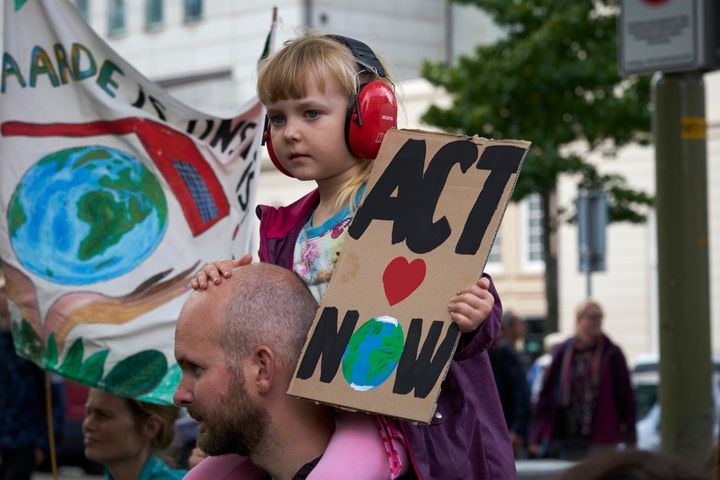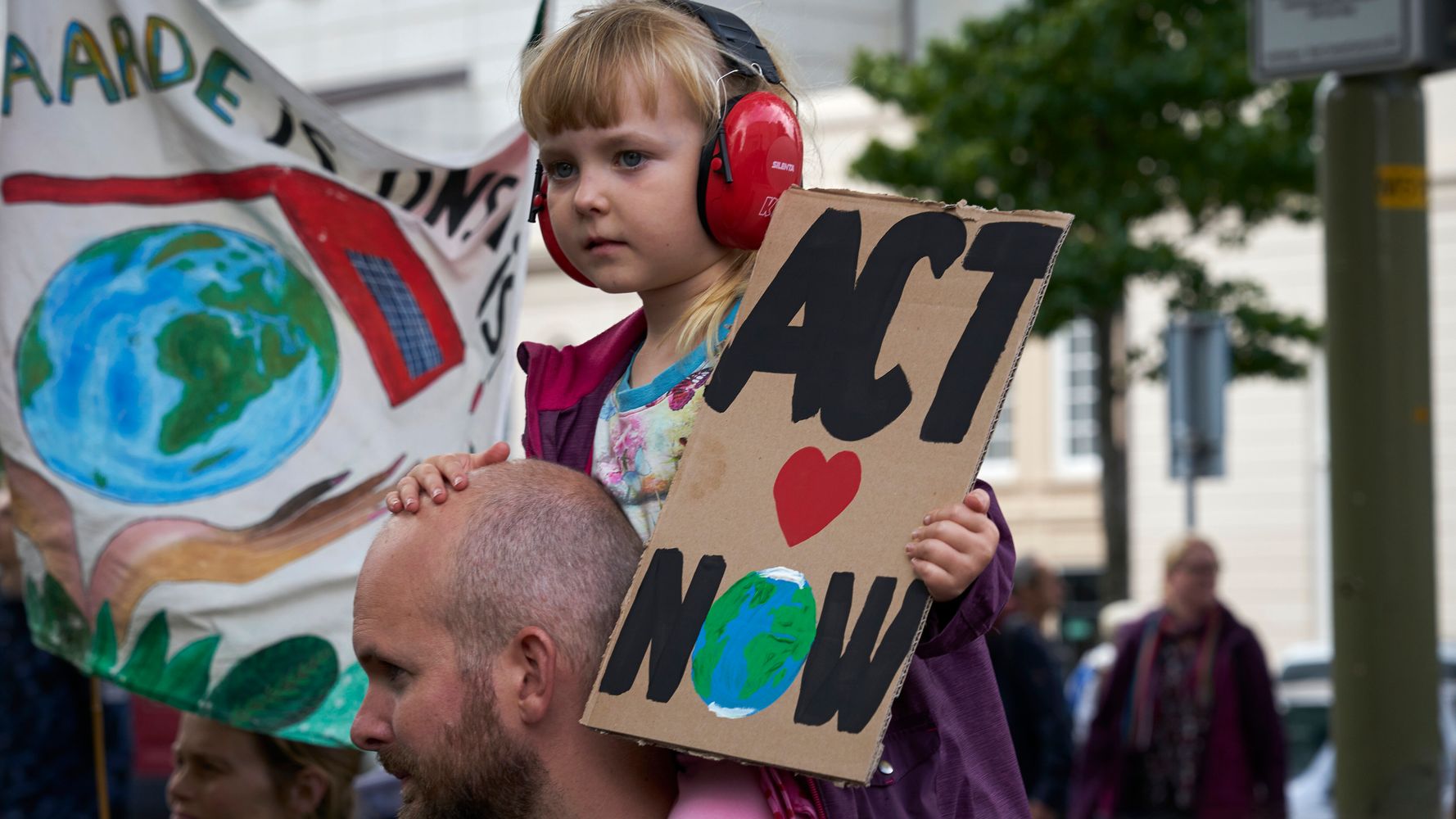[ad_1]
A lot has been written about would-be parents who opt out of having kids to help the environment. Media outlets — including this one — assert again and again, that millennials are not having babies because of climate change.
A popular counter-narrative is that people are not (or at least shouldn’t be) putting off having children because of climate change; instead, they’re attempting to raise a new generation of environmental stewards who will take action in a way other generations have failed to. Basically, it’s the “they’ll save us and clean up the mess we haven’t” argument for having children.
But raising enlightened climate activists feels like one of those lofty goals that is easy to lose sight of when you’re deep in diapers and school schedules. What does it actually mean, not just in theory or eloquent essays, but day in, day out? And how can parents avoid scaring the sh*t out of kids, adding to the long list of things they shouldn’t have to feel anxious about, like active shooter drills?

Here are five practical strategies for parents to keep in mind.
Don’t avoid the issue
Parents sometimes have a (completely understandable) tendency to shield their kids from frightening stuff, but experts say that avoiding difficult topics hurts kids more than it helps them.
In short, that’s because kids know what’s up. In one survey of fifth graders, more than 70% said they felt pessimistic about the Earth’s future — some expressing apocalyptic fears, like, “Maybe there is not going to be [another] 100 years.”
“One way children cope with problems is by relying on adults to address them,” said Susan Clayton, chair of psychology at the College of Wooster in Ohio. “The level of denial in our society, particularly at the highest levels of government, can only contribute to children’s anxiety and anger about climate change.”
But try to avoid all doom and gloom… until fourth grade
David Sobel, an environmental educator and faculty member at Antioch University in New Hampshire, has an expression he likes to use: no tragedies until fourth grade. Before that time, you’re just not helping your child by talking to them about the crises our environment faces.
“Tragedies refers to large Earth-scale problems that kids can’t really have any effect on. Climate change is one of those, rainforest destruction, ozone depletion, those kinds of things,” Sobel said.
“There’s a developmental shift going on right around fourth grade, which has to do with their broadening scope of understanding and awareness. … There’s this capacity to think rationally — and to have reason over emotion be accessible to kids,” Sobel said.
If your 9-year-old or 10-year-old isn’t ready for those kinds of heavier conversations, don’t have them yet. That doesn’t mean you’re ignoring or denying the problem. It simply means you are being respectful of where your child is right now.
When they’re little, your number-one goal is to foster a love of nature
It might seem like the best way to raise environmental stewards is to talk to them directly about climate change, and while those kind of frank conversations are essential, experts say it’s not actually your most potent tool.
“Grounding children in the natural world is way more important than teaching them that big tragedies are looming on the horizon,” said Sobel. Research links childhood play in nature to all kinds of future environmental stewardship: volunteering, support of pro-environment policies, buying “green” products, recycling and more. Without fostering a deep connection to nature, you can’t effectively push your kids toward adopting environmentally friendly behaviors. They simply will not care enough.
You don’t have to live in the woods, adds Sobel. (When he spoke to HuffPost, he had just had what he called a “transcendent natural experience” on Governor’s Island, right in the middle of New York City.)
“Just being on the street and interacting with squirrels and pigeons can do it,” Sobel argued. “Parents’ job is to prioritize those kind of walks and those opportunities for green time, even if you live in an apartment in a city.”
Focus on small actions
One of our big jobs, as parents, is to help our kids form healthy, productive habits that they’ll have for life. And the window to do so is surprisingly short. Some research suggests that routines and habits are pretty well formed by the time kids are 9.
Establishing good environmental habits is as important as, say, teaching your kid to make his bed or clean up after herself. So be consistent, and use explanations that are “small-scale” and “understandable” Sobel says, like, “Let’s turn off the lights when we leave, because it’s conserving energy and that is better and healthier for everyone.” Or, “Let’s recycle because these things can be transformed into new products, and it is healthier for the Earth.”
For kids who are starting to have a bigger, broader understanding of the stakes, encouraging them to take small daily actions will make them feel “less helpless, and more empowered,” Clayton echoed. And again, once they’re around that fourth grade threshold, you can start connecting these smaller, daily actions to the bigger picture of the climate crisis.
Always be on the lookout for signs of anxiety
Teenage climate activist Greta Thunberg has spoken publicly about how she fell into a pretty deep depression when she was 11 years old, fueled in part by her fears over climate change. And while there hasn’t been a lot of research examining the extent to which environmental issues are linked to mental health concerns in children, some experts say they’re seeing “eco-anxiety” in their patients. (Remember that storyline in the second season of “Big Little Lies”?)
Parents certainly need to be attentive to whether any concerns their child is feeling about the environment are affecting their ability to function: to do their homework, for example, or to sleep and socialize with friends the way they normally would, Clayton says. Those are signs that they might be struggling with some real anxiety about this, and could benefit from some outside help. The pediatrician is a good place to start.
Ultimately, parents’ goal is threefold, Clayton said: “Acknowledge that it’s a problem, emphasize that there are things to do about it, and encourage kids to get involved.”
[ad_2]
Source link

